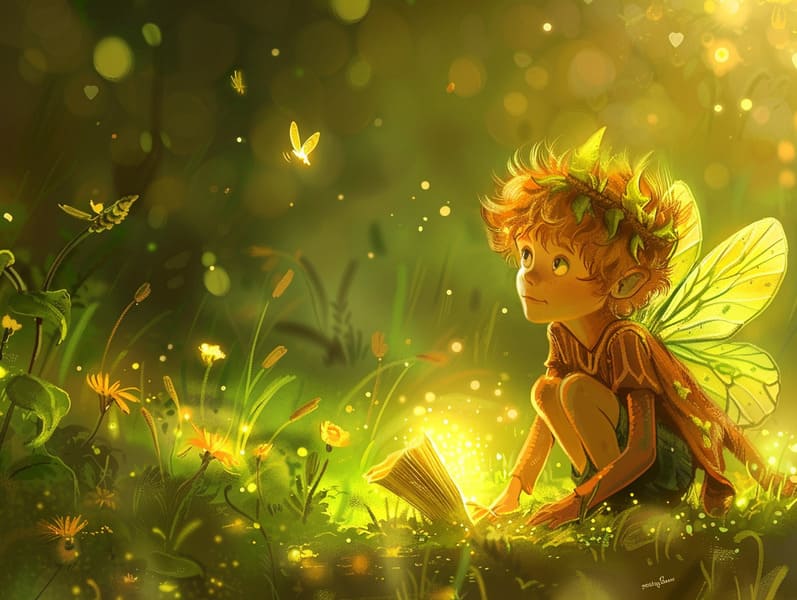The Genesis of Timeless Fairy Tales with the Unchanging Wonder.
The Genesis of Timeless Fairy Tales with the Unchanging Wonder.
Blog Article

Vintage fairy tales have deep roots. These tales have been whispered from one generation to the next ages before they were ever inscribed. They were born from a variety of cultures, including European traditions. They were initially told among older generations, often carrying themes and messages mirroring the societal norms and beliefs of the time.
The Grimm brothers, Jacob and Wilhelm (the Grimm brothers), were among the first to gather and publish many of these beloved fairy tales. Their anthology, "Grimm's Fables," included stories like "Cinderella," "Hansel and Gretel," and "Snow-White and Rose-Red," which have since become staples in the world of classic fairy tales. Similarly, Andersen's delightful tales, such as "The Sea Maid," and "The Little Duckling," have enchanted hearts worldwide, securing their place in the pantheon of timeless fairy tales.
Even though they are old, traditional fairy tales remain as relevant as ever, especially as bedtime stories for kids. These delightful tales are now available in multiple formats, including richly illustrated books, charming animations, and online fairy tales.
Their lasting presence can be traced to several enchanting factors:
Vital Lessons: Old fairy tales often share important moral lessons. Stories like "The Shepherd Boy and the Wolf" teach the significance of being truthful, while "The Race of the Tortoise and the Hare" emphasize the qualities of persistence and unpretentiousness. These tales offer the young clear distinctions between moral and immoral, molding their moral compass in a gentle yet impactful way.
Compassion and Insight: Traditional fairy tales frequently feature protagonists facing challenges and struggles, prompting young listeners to understand with their struggles and applaud their triumphs. For instance, "The Tale of Beauty and the Beast" demonstrates the importance of seeing beyond the surface to realize the inner spirit of a individual, fostering perception and discernment.
Cultural Comprehension: Many ancient fairy tales are deeply embedded in the cultural contexts from which they emerged. Discovering these stories can provide delightful insights into different social structures, cultivating a sense of cultural appreciation and comprehension.
Imagination and Innovation: The imaginative elements in old fairy tales—mythical creatures—foster children’s innovative ideas. These stories carry readers to fantastical realms, revitalizing inventive ideas and a sense of delight that endures a lifetime.
Timeless fairy tales this site are not only captivating but also edifying. They provide magical tools in advancing various mind and heart abilities in the young. When classic fairy tales are narrated, they enhance language acquisition by showing new lexicon and elaborate sentence structures. This practice also nurtures hearing perception and attentiveness, as young readers stay focused, anticipating to see what happens next.
Furthermore, discussing the themes and characters of ancient fairy tales can nurture logical thinking and thinking skills. The young learn to detect patterns, make predictions, and realize cause and effect. These contemplations also ease young readers speak out their thoughts and feelings, contributing to their emotional intelligence.
In today’s high-tech era, the accessibility of web-based fairy tales has made these tales more acquirable than ever. Web-based platforms and digital apps offer vast collections of bedtime fairy tales that can be experienced or listened via anytime, anywhere. Fairy tales spoken are particularly sought after, sharing an fun way for kids to delight in these fascinating tales. Narrated books and read-out-loud videos carry characters and settings to life, often paired with entrancing background sounds and soundtracks that enrich the tale-telling adventure.
The everlasting appeal of traditional fairy tales lies in their ability to alter to contemporary times while maintaining their underlying messages. Contemporary updates of these tales often present more representative characters and modern settings, making them understandable to today’s audience. However, the fundamental themes of fortitude, warmth, and justness remain unchanged, continuing to move listeners of all ages.
Fairy tales also offer a sense of peace and predictability. They grant access to a systematic narrative with a distinct beginning, middle, and end, often wrapping up with the culmination of conflicts and the triumph of righteousness over wickedness. This consistency can be relieving for little ones, introducing a sense of steadiness in an fluctuating world.
Old fairy tales continue to delight and enlighten new generations, maintaining their delight and value in modern society. As bedtime stories for kids, they afford a perfect blend of charm and understanding, enhancing moral values, empathy, and creativity. The prevalence of online storybooks and the prevalence of fairy tales told out loud ratify that these traditional fairy tales remain attainable to new generations.
By perpetuating and telling these tales, we continue to celebrate the rich tapestry of narrative artistry and cultural heritage. Whether you are perusing a richly illustrated book, viewing a web-based library, or hearing an narrated book, the mystique of bedtime fairy tales is always within reach. These fairy tales convey of the endless presence of fairy tales and its ability to bind us across epochs and places.
If you are perusing a artistically illustrated book, exploring a digital collection, or listening through an voice book, the fascination of old fairy tales is always within reach.
These tales teach us of the steadfast essence of fairy tales and its ability to hold us together across time and space, forming a connection that fascinates and enlightens alike.